
Syrian hamsters are native to northern Syria and southern Turkey.
Syrian hamster facts are plentiful. Besides these alluring little creatures, also known as Golden hamsters, they are among the most popular pet rodents globally. These lovable little hamsters can live up to three years and are low-maintenance pets, perfect for kids. But Syrian hamsters are also feisty and can be grumpy if startled. Let’s find out more about these cute little Syrian hamsters.
1. Syrian Hamsters Are Not Native to Pet Shops

Syrian hamsters are native to northern Syria and southern Turkey but are now found worldwide.
©Happy monkey/Shutterstock.com
As the name implies, they are native to northern Syria and southern Turkey. Today, you find Syrian hamsters in the United States and across the globe, where people keep them as pets. In the wild, Syrian hamsters live in dry arid places like deserts, dunes, river valleys, and rocky areas. But, they also live in gardens and agricultural areas. These hamsters burrow and make dens with interconnecting paths where they sleep and escape predators.
2. Syrian Hamsters Are Solitary
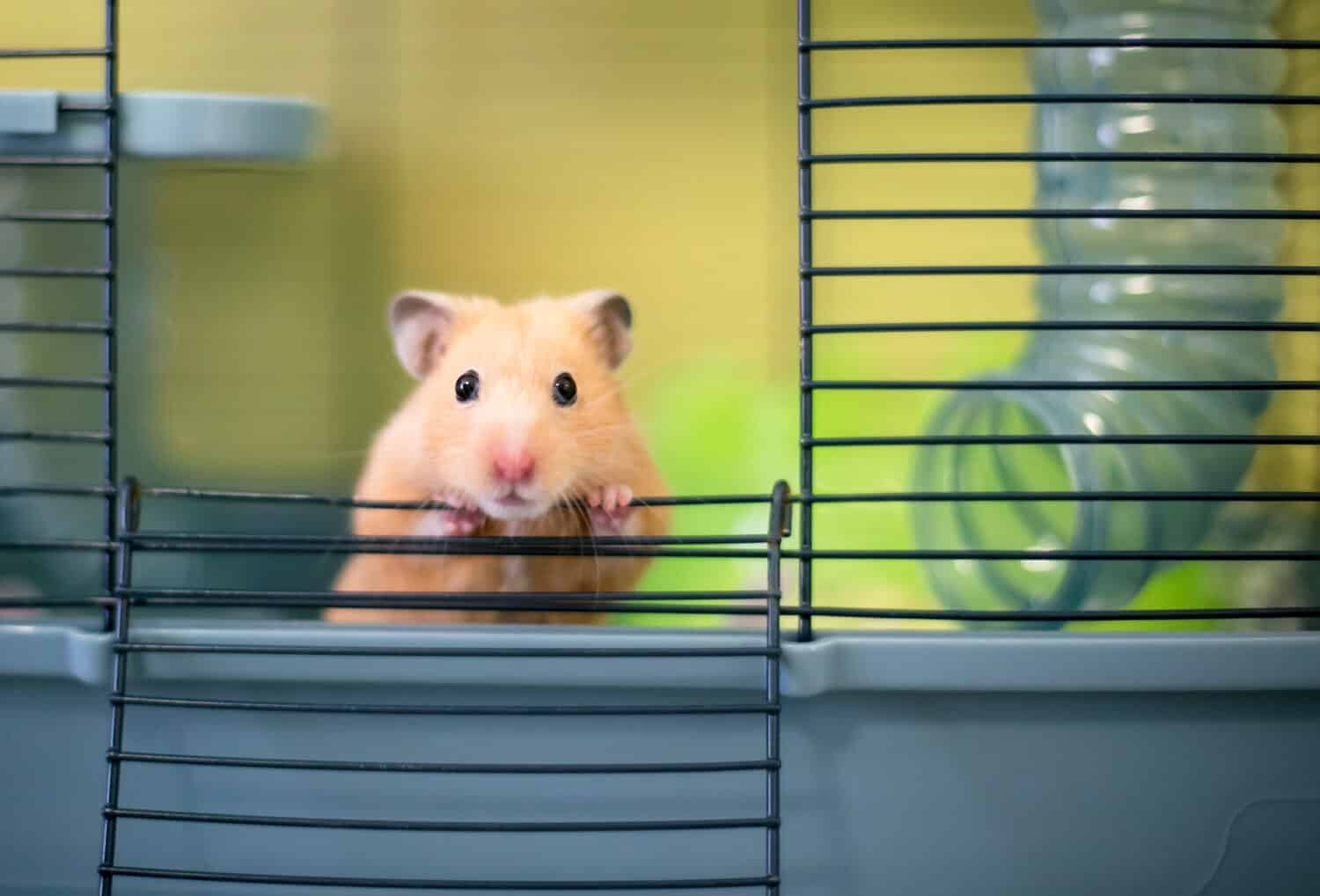
Syrian hamsters are so territorial that they don’t want any other hamsters around.
Image: Mary Swift, Shutterstock
©Mary Swift/Shutterstock.com
Whether these hamsters are kept as pets or in the wild, Syrian hamsters are happier living a solitary life. Syrian hamsters are solitary because they are naturally territorial and do not allow any hamsters within their home range. If another hamster enters their space, they will attack the intruder. The only time they do not become aggressively territorial is during mating. But Syrian hamsters are so territorial that they may even attack their offspring, and young Syrian hamsters will sometimes attack each other in a fight to the death.
3. Syrian Hamsters Usually Give Birth to Eight Pups
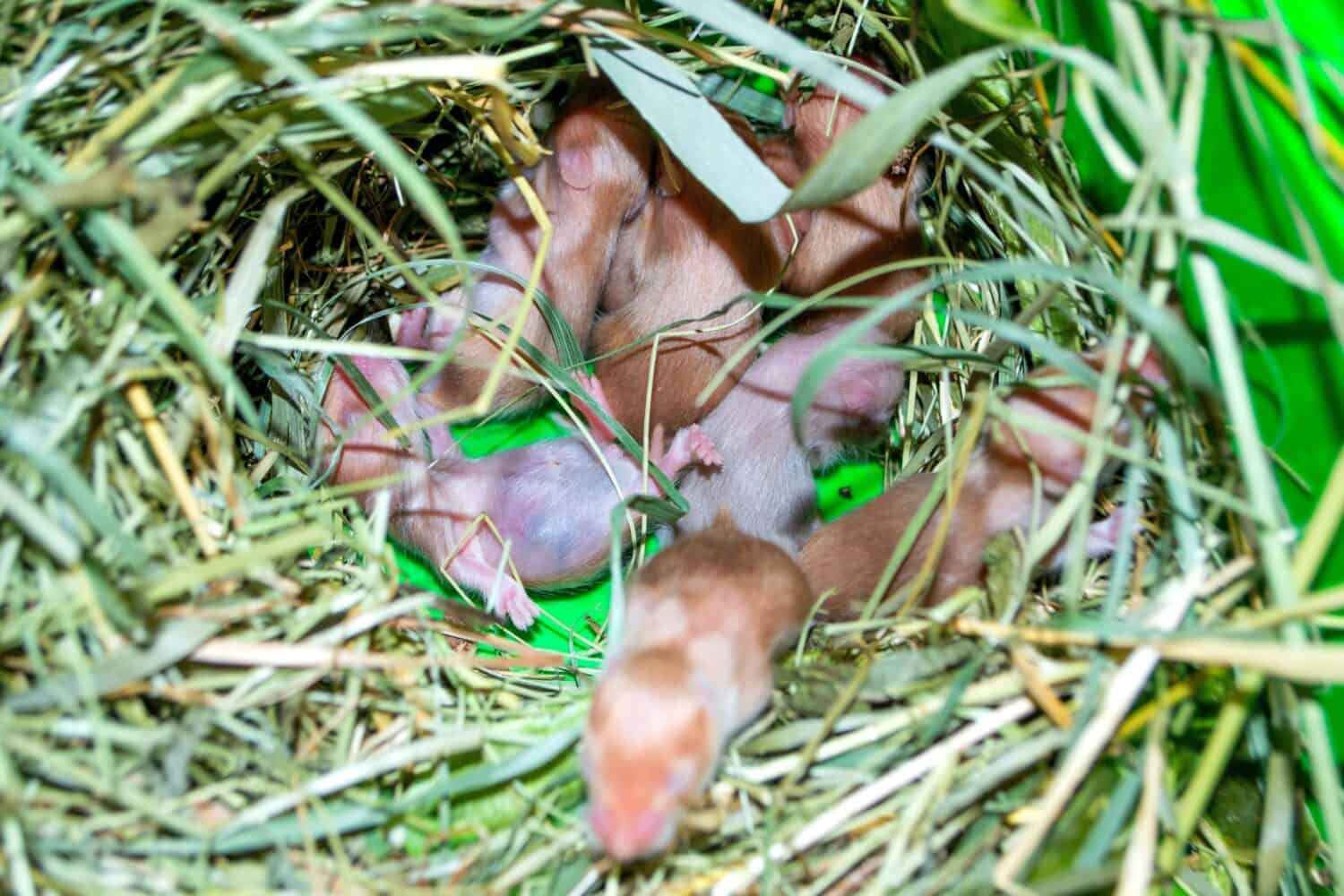
Syrian hamsters can give birth to as many as 20 pups – causing the mother much stress.
Image: MarinaGrigorivna, Shutterstock
©MarinaGrigorivna/Shutterstock.com
After mating, the female Syrian hamster will be pregnant for 16 to 21 days. Although they have a short gestation period, these hamsters give birth to eight to ten pups. In some cases, Syrian hamsters can give birth to 20 pups. First-time mothers often become stressed and frightened by the number of babies they produce. She might panic and abandon her offspring or eat them if this happens. If the babies survive, you should separate them from the mother and each other after four weeks, when they reach maturity. If you do not separate them, they may kill each other. Syrian hamsters, as pets, live between two and three years, but wild Syrian hamsters can live between one and two years.
4. Syrian Hamsters Look Like Cute Teddy Bears
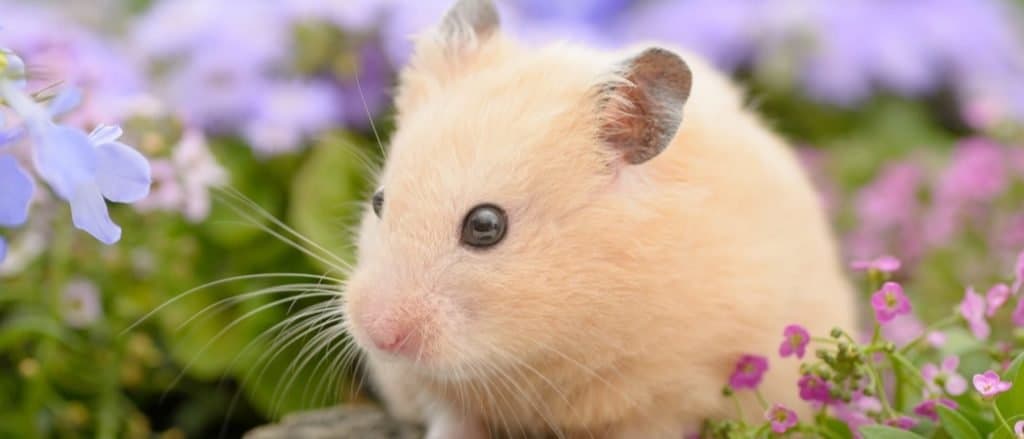
Syrian hamsters are fluffy and adorable.
©stock_shot/Shutterstock.com
These hamsters have small, round, fluffy bodies that are just adorable. Fur covers their stout little bodies with a tail hidden under all the fluff. Their ears, feet, and legs are tiny and mostly covered with this soft cloud of fur. Because of their appearance, these hamsters have earned themselves the nickname ‘teddy bear hamsters.’
Interestingly, the Syrian hamster has flexible cheek pouches that can expand as far as their shoulders. They use these pouches to carry food to their burrows after foraging. It’s an interesting Syrian hamster fact that this feature has also earned them a nickname in Arabic, which translates to ‘mister saddlebags.’ Syrian hamsters grow to six inches and weigh between 6.2 and 7.9 ounces. Wild Syrian hamsters are skinnier and weigh between 3.5 and 5.3 ounces.
5. Syrian Hamsters Communicate Using Chemical Cues
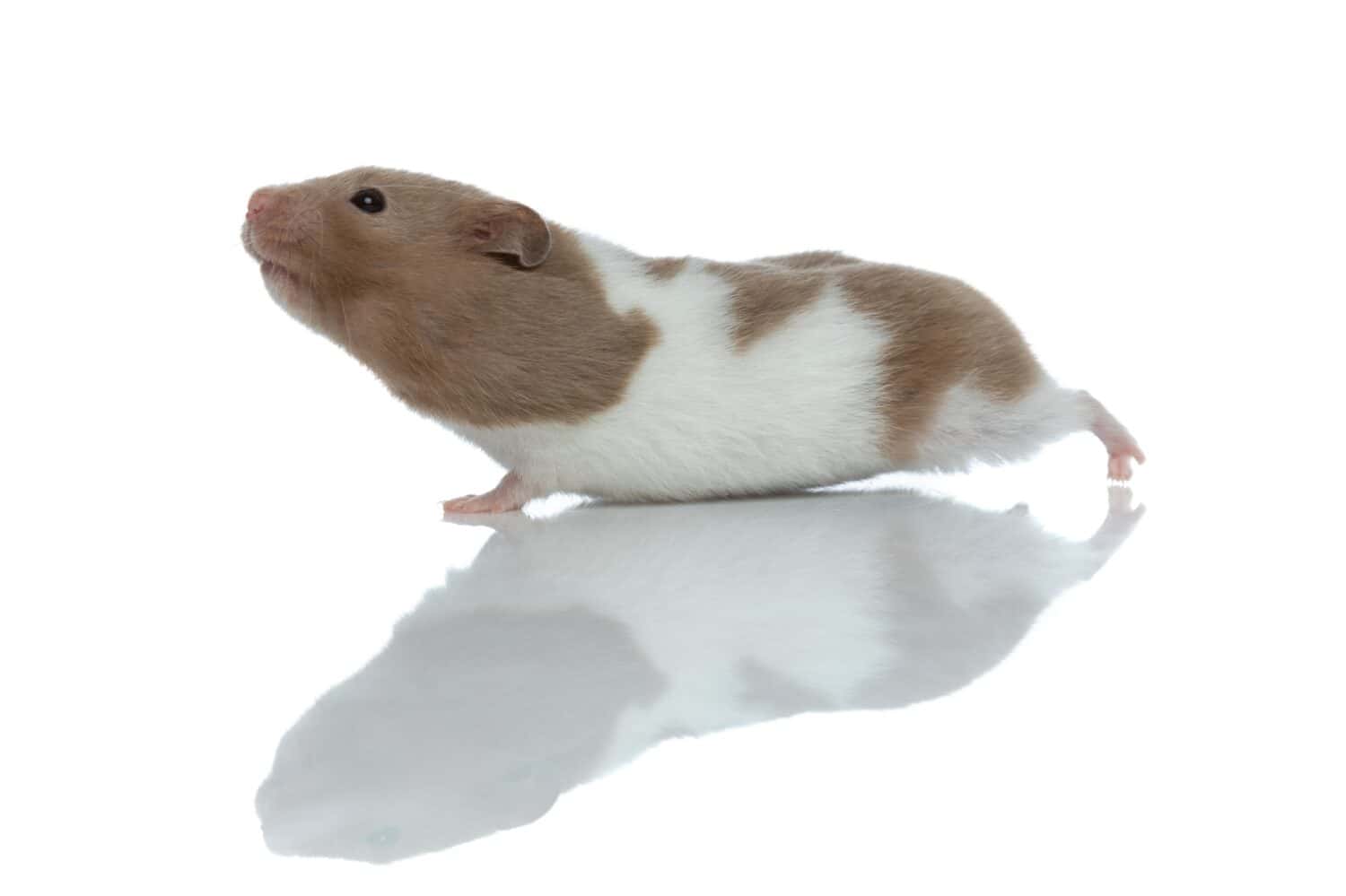
Stretching is a way for Syrian hamsters to express their emotions.
Image: Viorel Sima, Shutterstock
©Viorel Sima/Shutterstock.com
These hamsters have adapted to communicate using chemical cues and body language. Syrian hamsters have scent glands, known as flank glands, on each hip. They use these remarkable glands to mark their territories and their strong sense of smell to locate this odor to avoid the habitat of another hamster. Syrian hamsters can also communicate using ultrasonic sounds that humans cannot hear. Besides this, the hamsters will grind their teeth, squeak, hiss, click, or chatter. To show their different emotions to humans, they dig, groom, stretch their bodies, lift their ears, and display their teeth.
6. Syrian Hamsters Are Omnivorous
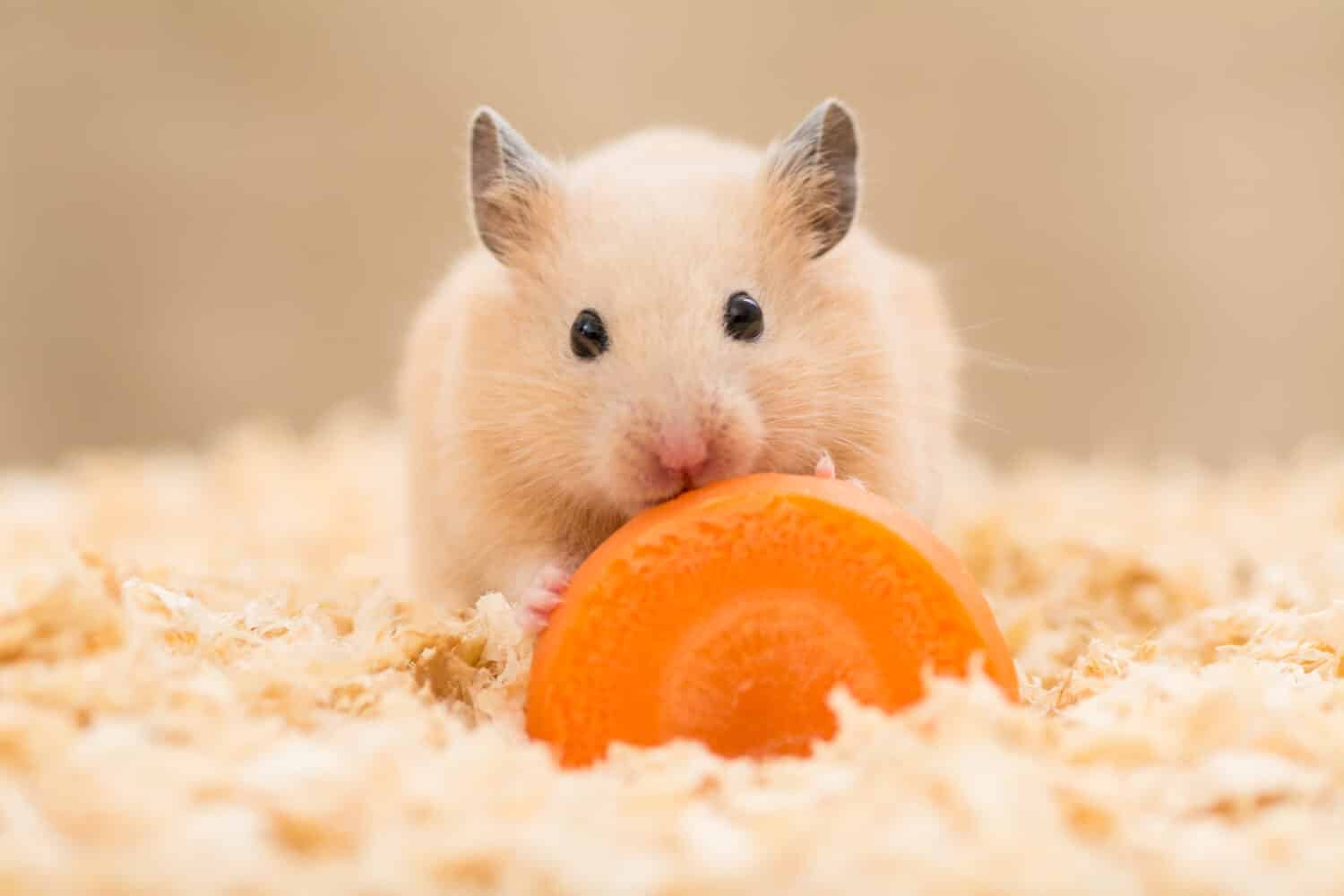
Nothing is cuter than watching your hamster hold a big wheel of veg as it eats.
Image: stock_shot, Shutterstock
©stock_shot/Shutterstock.com
Omnivores eat a combination of animal and plant matter. Wild Syrian hamsters eat fruits, vegetables, grains, nuts, roots, seeds, insects, and small animals. Owners can keep their Syrian pet hamsters happy by feeding them grains, nuts, broccoli, carrots, and apples. Owners can also give them insect feeders and boiled eggs.
7. The Syrian Hamster’s Bite Is Painful

Syrian hamsters are easily frightened and can respond with a bite.
Image: Natalia7, Shutterstock
©Natalia7/Shutterstock.com
Syrian hamsters have long, strong teeth but only bite humans if they feel threatened. Sharp movements or loud noises can scare them, possibly prompting them to retaliate by biting the threat. They may also bite owners who mishandle them. However, Syrian hamsters enjoy their owners handling them without holding them too tightly. Owners must also remember those sleepy hamsters can be grumpy. If you wake your hamster, you can startle it, encouraging them to bite you. So be gentle when waking them up.
8. Taking Care of a Syrian Hamster Is Simple

A spacious cage filled with substrate, seeds, veggies, an exercise wheel, a tiny house, and places to explore and hide will make your hamster very happy.
Image: TShaKopy, Shutterstock
©TShaKopy/Shutterstock.com
It is a well-known Syrian hamster fact that these pets are easy to handle and are not high maintenance, making them the perfect pet. Most importantly, you cannot put this hamster in a cage with another hamster. They are territorial and will likely fight to the death if you force them to share the same space. You should provide them with a spacious cage or enclosure where they can run around and play to get their exercise.
Owners can also fill their cages with ladders and tubes for exercise. As their caregiver, you should also ensure you include a small house or nest that is dark. Syrian hamsters are nocturnal and need a dark space to sleep during the day. The bottom of their cages must have a substrate, like paper or sawdust. This substrate is necessary to soak up their urine and allow them to dig burrows. You should clean and replace this substrate weekly or more frequently to maintain a hygienic environment.
9. Facts About Syrian Hamsters: Their Teeth Never Stop Growing
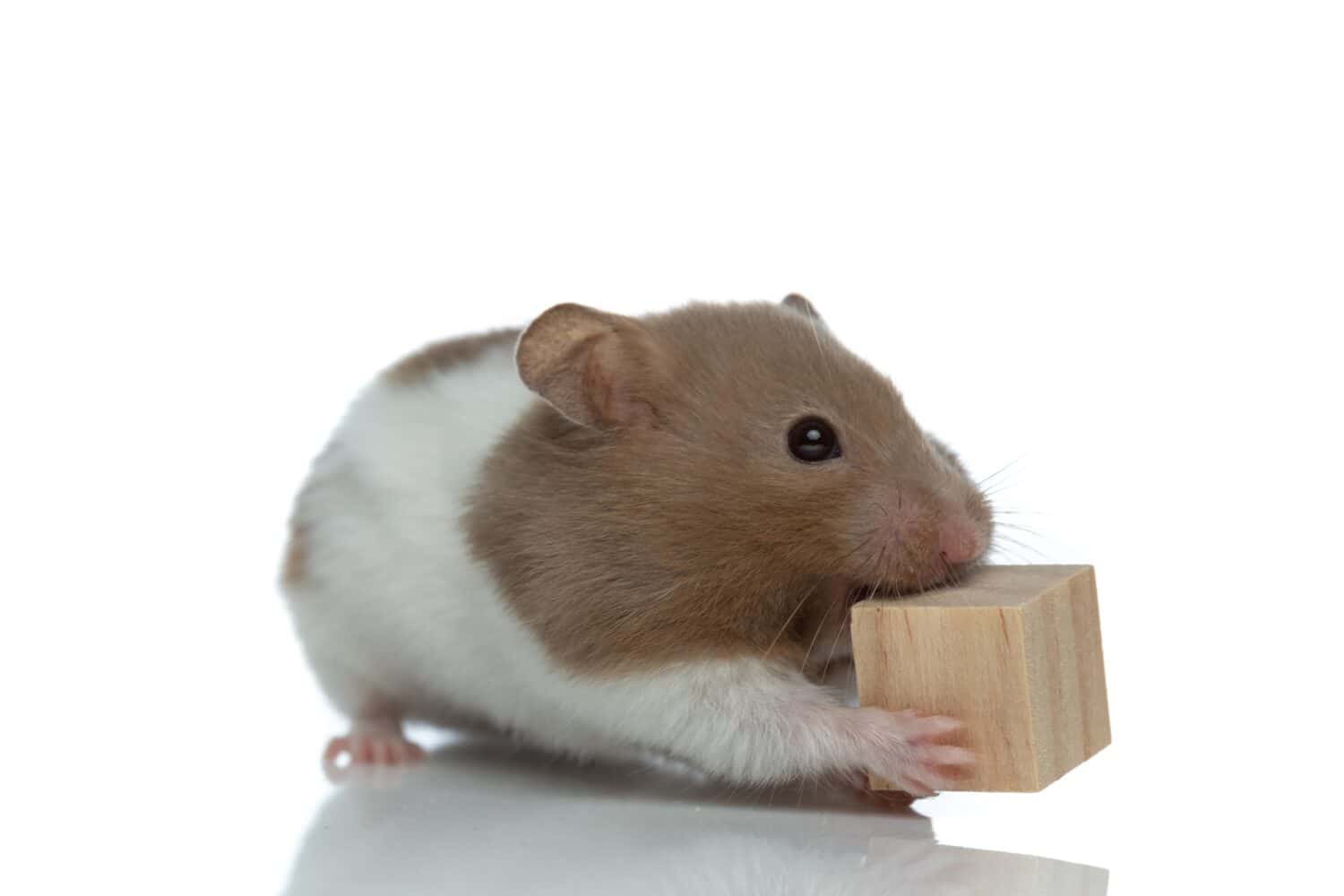
Like other rodents, hamsters need something to gnaw on to keep their teeth a comfortable length.
Image: Viorel Sima, Shutterstock
©Viorel Sima/Shutterstock.com
Syrian hamsters, like other rodents, have teeth that never stop growing. If you keep them as pets, you should give them toys or objects they can gnaw on. Providing them with toys and objects helps keep their teeth at an optimum length. If their teeth grow too long, you must take them to a veterinary surgeon to clip them to a comfortable length, which is yet another interesting fact about these Syrian hamsters.
10. Syrian Hamster Can Go Into False Hibernation
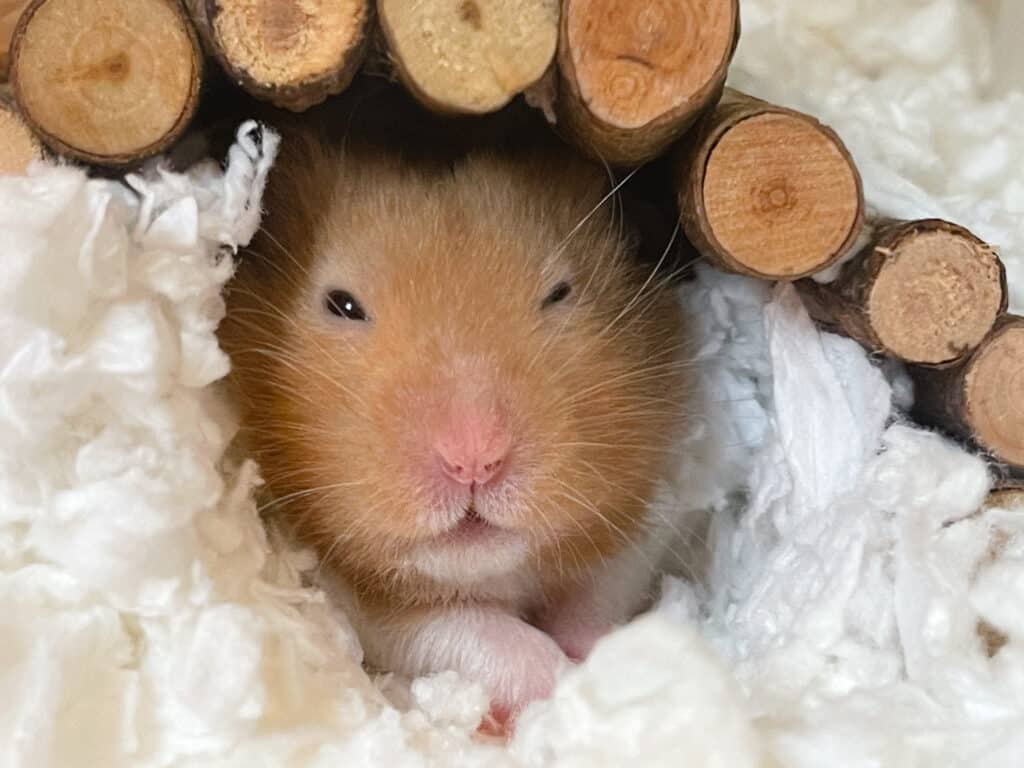
You can put a heated pad over the Syrian hamster or a hot water bottle in the cage to raise their temperature.
©iStock.com/Conny V
Interesting facts about Syrian hamsters are that they can go into a false hibernation when they live in a space where the temperature drops below 40 ̊F. During false hibernation, it may seem like these hamsters are asleep or even dead. If you think your pet hamster has entered false hibernation, you should gradually raise the temperature in the space. You can put a heated pad over the Syrian hamster or a hot water bottle in the cage to raise their temperature
The photo featured at the top of this post is © stock_shot/Shutterstock.com
Sources
- Pets Corner UK Ltd, Available here: https://www.petscorner.co.uk/hamster-kit
- Animal Facts Encyclopedia, Available here: https://www.animalfactsencyclopedia.com/Syrian-hamster.html
- Kidadl, Available here: https://kidadl.com/facts/animals/syrian-hamster-facts
- Smithsonian Magazine, Available here: https://www.smithsonianmag.com/science-nature/the-untold-story-of-the-hamster-aka-mr-saddlebags-1223774/
- Live Science, Available here: https://www.livescience.com/27169-hamsters.html
Thank you for reading! Have some feedback for us? Contact the AZ Animals editorial team.






